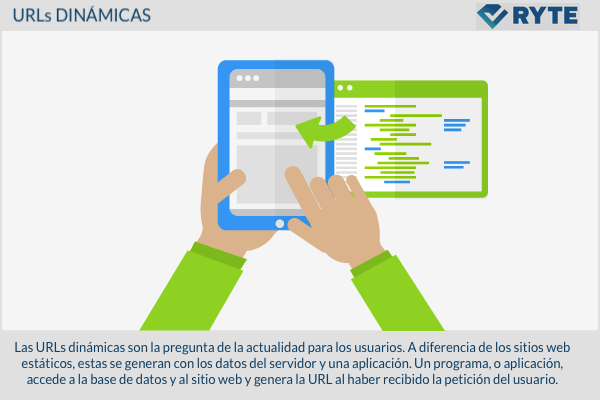The Dynamic urls are the current question for users. Unlike static websites, these are caused by data from the server and an application. A program, or application, accesses the database and the web portal and generates the URL upon receiving the user's request. These types of URLs are mainly used in forums, product lists, sessions and interactive websites.
General information
A Dynamic url is characterized by using the so-called URL parameter next to the static URL. This parameter enables the URL to be created from a database that the server obtains and parses. Signs such as the question mark or the equal sign are usually found. The most used programs to create this type of dynamic websites are JavaScript, PHP, Java EE wave Microsoft NET platform.
In practice
An example of a Dynamic url is:
http://www.domain.de/kategorie/artikel.php?language=de&inhalt=dynamische-urls
Here you can find a dynamic web portal with a product page of a specific category, in German. This product list is created automatically when the user sends the request. One of the reasons why Dynamic urls in this type of pages it is due to changes and updates of the products, at the same time thanks to the Dynamic urls users will be able to view only those products currently available.
Relevance for SEO
Dynamic websites have spread and are considered the best option available today. However, search engine crawlers are not able to correctly read the information through the Dynamic urls. Thus, it is recommended to pay attention to various aspects of SEO to ensure that the crawlers can enter the data correctly.
When they are used Dynamic urls It is very common for duplicate content to be created, since the same content can be accessed through different URLs. To avoid this, you can use the Rel = Canonical tag and locking parameters by means of the tool Google Webmaster Tool. In addition the redirects and the module mod-rewrite.
Apart from this, Dynamic urls usually present a Click Through Rate - CTR lower. It is also essential to review the semantic aspects of the URL since it does not usually work as in static URLs, that is, with keywords. It is recommended create dynamic page titles and content descriptions in web metadata.
When creating dynamic content, care should be taken that it is "friendly" in the eyes of seekers. The code should be simple and clear, and those parameters that are not required should be removed. URLs should be as short as possible - see URL length. Finally, those important parameters should not be hidden: to avoid losing these parameters they can be written in a static URL.
For certain apps it is recommended to avoid dynamic URLs. Menus, navigation or footer should be written with static URLs so that search engines can interpret information and links correctly. This dynamic avoids the loss of juice link.
Web Links
- Everything You Need To Know About Friendly URLs Blog deteresa.com







